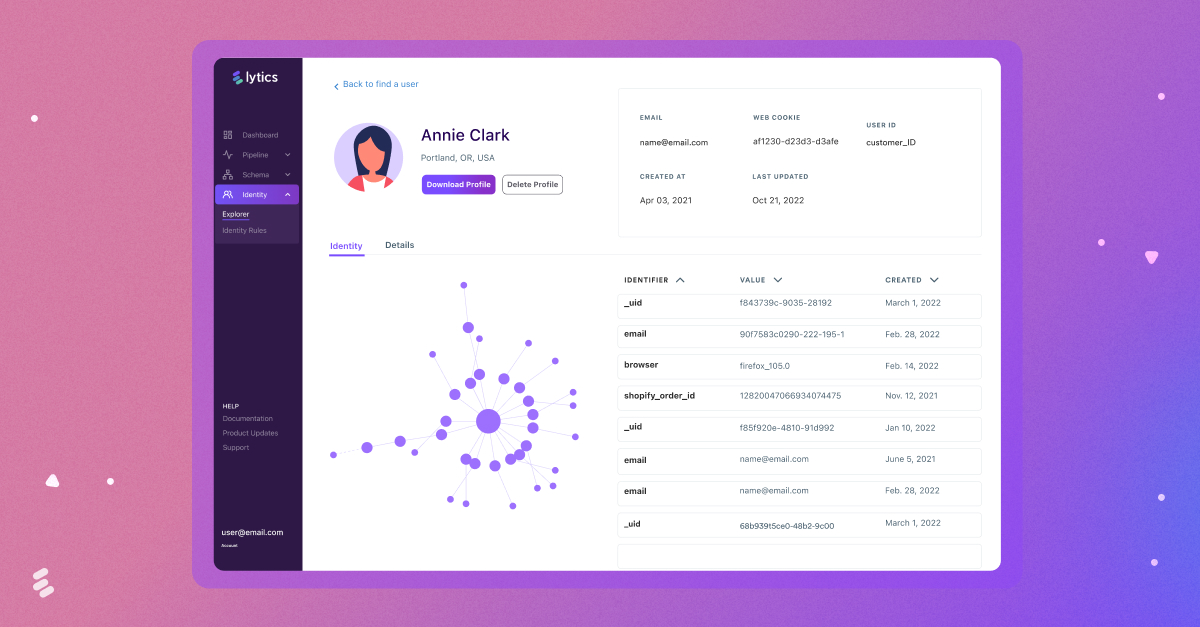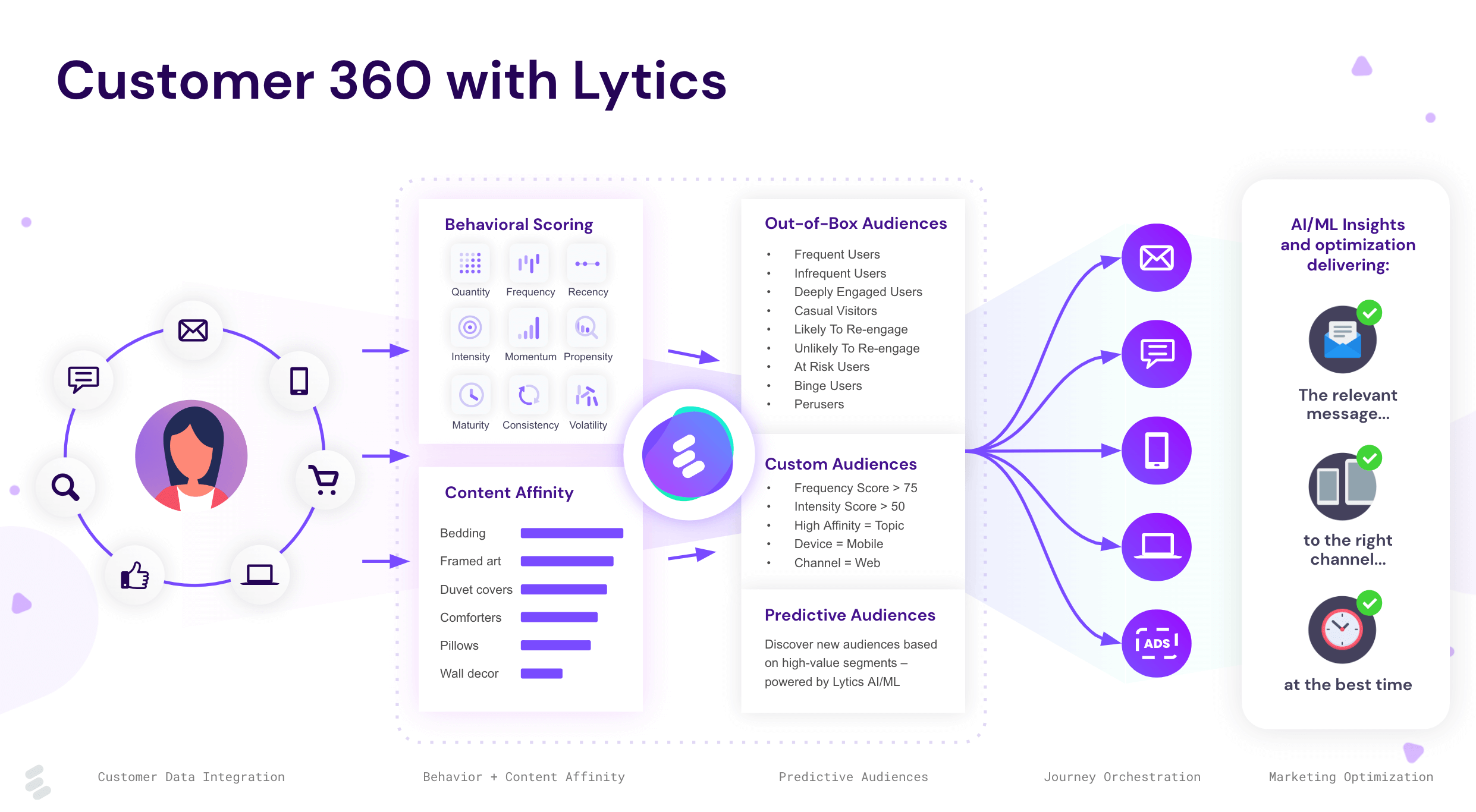How to mitigate merge conflicts with self-healing identity management
July 12, 2023

Customers today engage with brands across multiple channels. Interactions happen in person, over apps and on websites. And this multichannel approach to engagement can be a challenge to brands looking for a unified view of each customer.
Businesses today face several challenges related to identity resolution, including tech stack differences, with brands using disparate systems for data, data warehousing and storage. In addition, older, legacy data, stored in legacy systems, often lack the identifiers and details that help pinpoint how customers engage.
Compiled from insights from our recent webinar, here are some best practices for modern identity resolution that’s always accurate (even over time and as data and identifiers change).
Little-known but highly impactful best practices in identity resolution
1. Prioritize both profile accuracy and profile health
Good identity resolution relies on two tenets to your profiles: health and accuracy. But as more data comes in to your consumer profiles, there’s more risk of them becoming bloated and inaccurate. Kelsey Abegg, Senior Product Manager at Lytics, explains how an identity strategy that takes these factors into account can boost business performance.
“A good ID resolution strategy will be dynamic and flexible enough to respond in a way that outputs a profile that continues to stay healthy, accurate, stable, and relevant over time. And when we have a more accurate profile, we have better campaign performance because it means that the insights that we’re appending to the profile actually have to do with the profile at hand.”
Abegg noted that with more accurate profiles, campaign performance is better, too.
That’s because the machine learning and artificial intelligence applied to those profiles are more accurate, yielding better results.
2. Set yourself up for success with better profile matches
Most companies with complex tech stacks tend to need to work hard to get better profile matches.
They often have the option to leverage deterministic and/or probabilistic approaches to matching. In a deterministic model, companies may have an email address or a phone number that brands try to match across different channels. Put simply, it’s about finding an exact match among records. Meanwhile, probabilistic approaches use algorithms to match records based on probabilities of how similar different records are. Both are valid options, but how do you ultimately, maximize your match. rates? You take advantage of the best of both worlds.
Sean McMahon, Professional Services Manager, Implementation at Lytics, explains.
“A hybrid of [deterministic and probabilistic approaches to matching] is really great, because you can look at your goals from a top-of-the-funnel approach with probabilistic matching where you’re trying to gain more reach. And later on in the funnel, as you’re trying to create that conversion, you want to have a more detailed approach on that profile, or a deterministic approach where you want that complete accuracy. You want to know for a fact that a specific profile is going to have this sort of data and that kind of identity resolution pattern — and you can.”
Using Lytics for foolproof profile resolution
Lytics offers a solution, providing a seamless approach to identity resolution. You’re able to integrate, analyze and use customer data with confidence, pulling from multiple sources to create a single, unified view.

Here are a few things you may not (yet) know about how Lytics identity resolution works.
Lytics is ID-agnostic.
Lytics is ID-agnostic, meaning it can take multiple different identifiers from different sources. The various identifiers, such as email addresses, web cookies, phone numbers, typically fall into two categories: bridge identifiers and origin-generated IDs.
- Bridge identifiers. Lytics Decision Engine uses bridge identifiers to stitch data from multiple sources into a single customer profile. It looks for an exact match on an identifier such as an email address, account number or birthday in two different data sources. For example, if there’s an email address in a data warehouse and the same in a CRM, Lytics will connect the data into a single profile.
- Origin-generated IDs. These IDs are used for more general, initial profiles. They may use a cookie, for example, to create an anonymous profile with sparse information as an initial, basic Lytics not only stitches together profiles for more effective campaigns, it also ensures that data remains secure and compliant.
Lytics manages consent at every stage of profile development.
Compliance is an element of profile health. That’s why with Lytics, when new opt-in statuses come in, we’re able to merge it to the correct profile and make sure that profile stays healthy, and that it doesn’t get too large or unstable.
Lytics takes several proactive approaches to protecting data at different stages and based on customer preferences. These approaches include:
- Automated Hashing. This feature allows customers to hash incoming data in real time to encode information. When data are sent downstream or to a user interface, they’re encoded and protected.
- Data Hiding. Lytics lets you hide personally identifiable information (PII) from view within the user interface.
- Data Policies. As a matter of policy, Lytics never passes or pulls in data unless explicitly told to do so.
Profile integrity is critical for Lytics and our clients.
As a general rule, Lytics thinks in terms of profile longevity. That means ensuring that the profiles, especially the most active, which are most subject to thrash and friction, are protected.
- Lytics works to keep profiles relevant, keeping pertinent information and compacting other data based on the strength of identifiers and the expiration of set identifiers.
- Lytics also addresses profiles on the edge, the outliers that can throw off profile resolution. (i.e. multiple household members log onto the same machine or the same cookie is applied to multiple people. Lytics can unlink profiles that shouldn’t be linked and prevent merging of profiles that should not be merged.)
- Lytics uses artificial intelligence to manage many of these approaches. In the long run, the emphasis keeps profiles accurate.
What this means is that as your profiles build out, as your customer views become more enriched, we can feel ensured that those profiles are going to stay accurate. That is the goal: that they stay accurate for campaign performance, for privacy, and for consent.
With a hybrid approach to profile development and a commitment to profile health, accuracy and privacy, Lytics is the ideal option for marketers managing consumer data from multiple channels. Watch the full webinar on demand for more insights, tips, and considerations.



